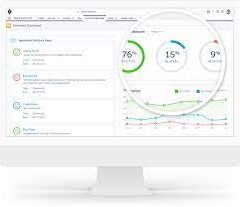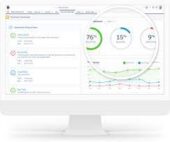Digital transformation is becoming a mantra in business, but how do you embark on this journey? What is the goal? What does it look like? Begin with a digital marketing roadmap.
What is the roadmap for digital marketing?
A digital marketing roadmap lays out your major areas of focus and ensures iterations stay grounded in that strategy. As you build your digital marketing roadmap, remember the goal is to facilitate: Alignment: A strategy-driven roadmap rallies the team around the work that needs to be done.
What are the four phases of digital marketing?
Awareness – Content focused on educating your audience.
Evaluation – Customers determine whether they need your product.
Conversion – Reasons to buy your product.
Delight – Keeping your audience engaged.
The initial draft is likely straightforward, conceived by visionaries in your organization, outlining the roadmap’s initial steps:
- Improve conversion rates.
- More conversions lead to more sales.
- Document the current customer experience lifecycle and identify areas for improvement.
- We can improve customer experience and reduce customer support tickets.
- Improve data hygiene: Remove bad data, organize existing data, and evaluate data collection.
- Clean, accurate data is key to successfully reaching our customers in the channels they prefer.
- Expand beyond single-channel sending to an omnichannel approach.
- Connecting with customers in the channel of their choice will increase engagement.
This initial draft is a good start but needs refinement before presentation to management for buy-in. The key is to make metrics SMART, following the framework proposed by management theorist Peter F. Drucker:
- Specific: Clearly define the goal.
- Measurable: Assign a number or checkpoint to the goal.
- Achievable: Attain the goal.
- Relevant: Apply the goal to your work or plan.
- Time-bound: Set a certain time period to achieve the goal.
Now, let’s transform the draft into a presentation-worthy strategic roadmap:
Strategic Plan
Vision Statement: Provide a seamless omnichannel customer experience to become the number 1 seller of our industry.
- Improve sales: Increase conversion rates by 2%. Evaluate and test content and CTAs in emails. Goal date: end of fiscal year.
- Improve customer experience and reduce support tickets:
- Audit and document the full customer experience lifecycle. Measurable by completion.
- Conduct interviews and secret-shopping exercises.
- Whiteboard the entire customer lifecycle.
- Goal date: end of quarter 2.
- Improve data hygiene to reduce the cost of bad data:
- Review and document data architecture. Measurable by completion.
- Identify all data sources and systems of record.
- Review platform and application configuration architecture.
- Audit data for accuracy.
- Whiteboard and document data model.
- Goal date: end of quarter 2.
- Reach customers in the channels they prefer:
- Create and release a new customer preference center to gain channel preferences from customers. Measurable by completion.
- Create a blueprint with technical requirements.
- Build and test preference center.
- Release new preference center.
- Goal date: end of fiscal year.
- Gain new customers by adding a new channel:
- Research and determine a strategy for adding the mobile channel. Measurable by completion.
- Determine mobile solution.
- Identify an action plan for adding mobile.
- Goal date: end of fiscal year.
This refined roadmap is more achievable, being both measurable and time-bound. For added effectiveness, consider SMARTER goals, where “E” stands for engagement evaluator and “R” stands for reward. Have an evaluator determine goal achievement and showcase how it impacts the organization in the long run.
What are the 5 key elements of digital marketing?
The five most important elements of a digital campaign consist of mobile considerations, organic search, social media marketing, content marketing and lead nurturing. All of these elements combined make up a cohesive digital marketing strategy.
What is 4Ps vs the 4Cs of digital marketing?
4Ps is Product, Price, Place, and Promotion. On other hand 4Cs is Customer Value, Cost, Conveniece, and Communication. 4Ps is more company centered in other hand 4Cs is more customer focused.
Note: For expert assistance with your assessment and strategic roadmap, contact your account executive at Tectonic to explore how our Salesforce team can assist with your planning. Once completed, revisit and tweak your roadmap to ensure customer experience is at its core and goals are SMARTER.
🔔🔔 Follow us on LinkedIn 🔔🔔













